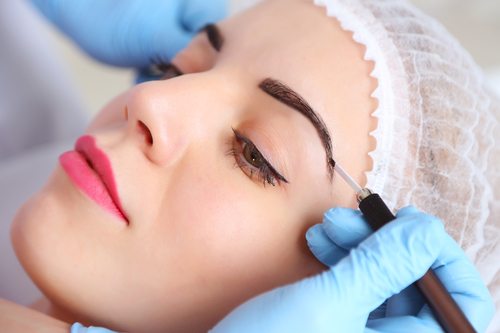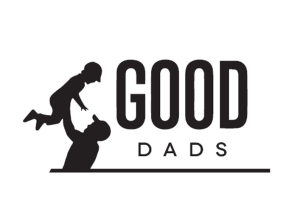Microblading. It’s on the Internet, it’s on tv, and it seems to be all the rage, but I am not sure people really understand what it is they are asking for or the limitations of the technique.
Unfortunately, we have all seen bad, discolored, poorly shaped, obviously tattooed eyebrows. These eyebrows are what people notice and remember. The good eyebrows, people don’t notice, and as a technician, this is my goal: for people to never notice the eyebrows I tattoo.
When I have a client come in asking for microblading, the first thing I ask is “Why?” Most of the time, it is because they want a “natural look.” I have been providing that since I started, and it is not exclusive to microblading.

Microblading vs. Traditional Tattooed Eyebrows
What Is Microblading?
Microblading is a technique where needles are drug across the skin, creating a fine cut where pigment can be placed in the skin. When this cut heals, if done correctly, it creates a thin, crisp line that mimics the natural look and texture of hair. Due to the nature of pigment insertion, a lot of pigment cannot be forced into the skin, leading to a shorter lifespan than more traditional tattooing methods. On average, 6–18 months.
What Are Traditional Tattooed Eyebrows?
The most traditional tattooing methods involve the insertion of a needle or needles into the skin in a tapping motion. This can be done either by hand or machine. This movement forces a lot of pigment into the skin, causing the tattoo to last. There are a wide variety of eyebrows that can be produced with traditional tattooing, the most common being the following:
Hair-Stroke or Feathered Brows: This is the closest to microblading, but it has been around much longer. Typically the hair strokes, once healed, will not be as fine or as crisp as the microbladed brows, but it still creates a natural, soft look and has a much longer longevity.
Soft or Powdered Eyebrow: This look is similar to the look most women get when filling in their eyebrows with powdered make-up. This technique is great for women who want a lot of fullness to their brow color.
Hard or Crisp Eyebrow: This is typically what people think of when they think “tattooed eyebrows.” It is an eyebrow with a sharp, defined line. It is typically the most distinct and artificial-looking brow. It produces a look more like an eyebrow pencil or marker.
Which Technique Is Best for You?
You may know what you like or, better said, what you think you like, but is it the best option for YOU? First and foremost, a skilled technician will let you know if your skin even allows for some of these techniques to be an option. Very thin, easy-to-tear, or brittle skin, for example, will not be able to heal well from the trauma of microblading. This results in a complete fading of the tattoo at best or unsightly blotching or smudging of the tattoo with possible scarring at worst.
Someone who likes dark, full brows, and fills them in everyday, probably won’t be satisfied by microblading. Even once the area heals, they may find themselves using their make-up over perfectly shaped brows, just because they are not full enough. Microblading will not create a completely filled look; it will add hairs and shape, but not fill.
Beware:
Merriam-Webster defines a tattoo as “an indelible mark or figure fixed upon the body by insertion of pigment under the skin or by production of scars.” By this definition, microblading, or any permanent cosmetic, is a tattoo. We are opening the skin and placing pigment beneath it. However, there are some out there who are promoting microblading as a ‘non-tattooing’ alternative for eyebrows. This is simply not true.
Taking it further, I once had a woman tell me that since “microblading isn’t really a tattoo . . .”, she was doing them in her salon. She admitted to me that she had no training beyond YouTube and did not have a tattooing license. This is horrifying to me, someone who knows and understands the terrible consequences of having an inexperienced or ill-informed technician.
So, on to the risk. Any time the skin is opened there is a risk of infection, but this is increased greatly by someone who does not have a properly cleaned and OSHA-compliant workspace and who does not use sterilized needles. Even worse, someone who reuses needles introduces the risk of blood-born diseases like hepatitis and HIV.
Any tattoo, whether artistic or cosmetic, requires skill with the needles in use. Poor ability to use these tools increases the risk of scarring, migration of the tattoo, and excessive trauma to the skin. Because of the nature of the technique, microblading has a higher risk of negative side effects in the hands of an inexperienced technician.
Color choice is also highly important when tattooing, and someone without proper training in the cosmetic tattooing field isn’t going to understand that importance. When you and your technician choose a brow color, that technician has already studied your skin while you were talking. They are looking at your color undertones, blood flow, and skin health. Knowing and understanding this is imperative in choosing a color that will not appear blue, grey, green, salmon, or any other color that certainly does not belong on your eyebrow. Microblading leaves less pigment in the skin than other tattooing techniques. Because of this, the color of microbladed eyebrows is influenced more by the surrounding skin and more likely to heal as an unsavory color.
In conclusion, do your research and ask questions. Is the person you’re going to properly licensed and trained? The website of the Society of Permanent Cosmetic Professionals has a list of technicians, all of whom agree to their safety standards and code of ethics, and most of whom regularly participate in continuing education. When done correctly, a permanent cosmetic procedure can be a safe and wonderful option to ease your daily make-up routine.
If you’re interested in permanent makeup and would like to visit our Med Spa in Springfield, Missouri, contact DermaHealth. We offer a variety of permanent makeup services including eyeliner, eyebrows, and scar camouflage. To learn more about your options, give us a call at 417-447-7777 or click here to schedule a free consultation. We look forward to hearing from you!






